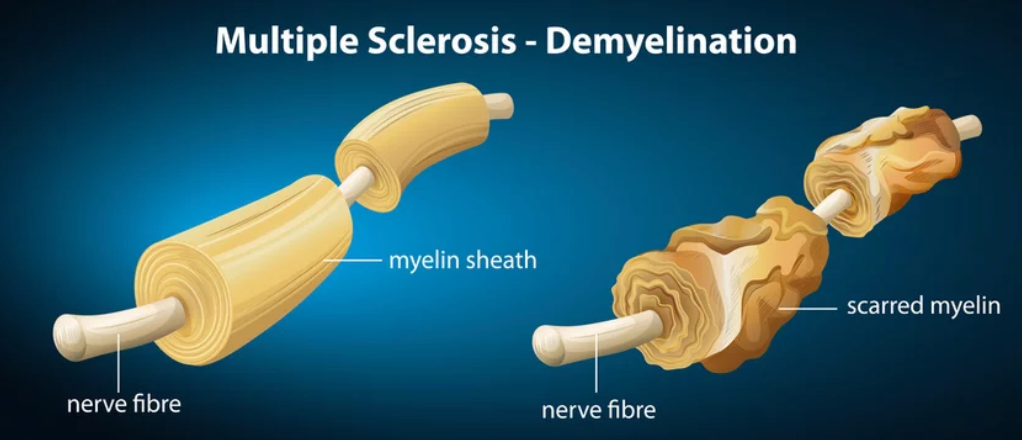Focusing on giant cell arteritis and optic neuritis
Clinical pearls on giant cell arteritis (GCA) and optic neuritis

Kelsey Moody Mileski, OD, FAAO

“Neuro-optometry is a growing field for optometric care in the US,” Kelsey Moody Mileski, OD, FAAO, from the Marietta Eye Clinic, Marietta, GA, and Richard Castillo, OD, DO, who practices in Tahlequah, OK, pointed out and shared their pearls regarding 2 of the hottest topics in this expanding field: giant cell arteritis (GCA) and optic neuritis
GCA: an emergent condition
This disease, according to Dr. Castillo, is the most common vasculitis in elderly adults. Although it is described as a large-artery vasculitis, it also affects large and small arteries and causes a variety of systemic, neurologic, and ophthalmic complications. Even suspicion of the disease should be considered an emergency.
“The vasculitis typically affects branches of the ascending aorta, i.e., the external carotid, temporal, and superficial temporal arteries, but also has a more diverse pattern of involvement. The ophthalmic and posterior ciliary arteries often are affected,” he explained.
Headache is the common first symptom that can occur anywhere in head or face. An important point is that any new headache in elderly patients should be considered GCA until that diagnosis is eliminated; pain especially in the distribution of the external carotid artery in the elderly is highly suspicious. Other presenting symptoms include tender scalp; fatigue discomfort, or pain in the jaw, while uncommon, may indicate ischemia.
Related: Understand neuropathic pain treatments
Patients can present with any degree of visual loss that is transient or permanent. Anterior ischemic optic neuropathy is the most common cause of visual loss followed by central retinal arterial occlusion.
Systemic symptoms of GCA include fatigue, malaise, and fever and the condition may be associated with polymyalgia rheumatica. Atypically, cranial nerve palsy, transient diplopia, and orbital inflammatory pseudotumor manifest.
Elevated erythrocyte sedimentation rate, C-reactive protein, and platelets are the tests of choice. A temporal artery biopsy is diagnostic. Ultrasound shows a halo around the temporal arteries.
The initial treatment is high-dose steroids. In patients with no visual loss, the oral steroid dose is 1 to 1.5 mg/kg; in the presence of visual loss, patients should receive intravenous methylprednisolone. Tocilizumab may be employed in those patients requiring a steroid-sparing regimen.
“Giant cell arteritis is a clinical diagnosis. A high index of suspicion along with prompt initiation of therapy can be sight saving,” Dr. Castillo concluded.
Optic neuritis (ON): old disease with new twists
Dr. Mileski described ON, which typically affects young women who present with acute, unilateral painful visual loss. ON development most often is idiopathic or secondary to multiple sclerosis (MS).
Typical ON. Some typical features are a best-corrected visual acuity that is 20/200 or better and optical coherence tomography images show peripapillary thickening and subtle retinal nerve fiber layer increase or a normal thickness.
The recommendation is for a prompt work-up and possible treatment in the emergency department. Treatment involves intravenous methylprednisolone (1,000 mg/day for 3 days followed by oral prednisone (1 mg/kg/day for 11 days). This regimen hastens visual recovery but does not improve functional outcomes. Visual recovery generally is good, with 91% of patients achieving 20/40 or better. A pearl is the avoidance of lower oral steroid doses because of the potential for a relapse.
ON is a well-known entity. The new information in ON involves the treatment of patients with MS. The FDA has recently approved a number of medications, most of which are intended to treat relapsing-remitting MS: Ocrelizumab (Ocrevus, Genentech) infusion, oral spionimod (Mayzent, Novartis), oral diroximel fumarate (Vumerity, Biogen), oral ozanimod (Zeposia, Bristol Myers Squibb), oral monomethyl fumarate (Bafiertam, Banner), injected ofatumumab (Kesimpta, Novartis), and ponesimod (Ponvory, Janssen). Cladribine (Mavenclad, Merck KGaA) also treats relapsing-remitting and secondary progressive MS but is associated with safety risks.
Atypical ON. There are other atypical forms of ON that need to be considered in every case as they are being seen with increased frequency. The two main conditions highlighted are neuromyelitis optica spectrum disorder (NMOSD) and myelin oligodendrocyte glycoprotein autoantibodies (MOG-IgG). The former is most prevalent in non-white women and the vision loss is typically severe; while in the latter, the ON is more isolated, recurrent, severe and painful. Disc edema is more frequently seen. Bilateral optic neuritis is more common in both conditions.
Atypical ON may occur in association with other conditions as well. Inflammatory/autoimmune conditions (like rheumatoid arthritis, Sjögrens sarcoidosis and lupus) may show other signs ocular inflammation on examination; paraneoplastic syndromes, such as small cell carcinoma, typically do not present with pain and the vision loss is subacute, progressive, and bilateral; and in infectious conditions especially in immunocompromised patients may present with fever, meningitis, cranial nerve palsies, and encephalitis.
Atypical ON is less responsive to steroids and improved visual outcomes have been reported with plasma exchange (PLEX). The visual recovery in these patients is limited with some improvement possible. Unlike MS, these patients are treated with immunosuppressive medications to prevent future attacks. Those with MOG-ON are more like to have recurrent episodes.
Her clinical pearls are the following:
Bilateral ON is usually atypical.
In patients with no or little steroid response, atypical ON should be considered.
Papilledema can also present with bilateral disc elevation but is not often associated with sudden visual changes.
Long-term treatment for MS can worsen disease in patients with NMO which is why an accurate diagnosis is critical.
“Atypical optic neuritis should be considered in any patient with limited visual improvement, severe vision loss, disc edema or a bilateral presentation. It is essential that these patients are offered more treatment options besides intravitreal steroids for the best visual outcome. Due to this, I recommend ordering testing for NMO and MOG in all patients with optic neuritis,” Dr. Mileski concluded.
Newsletter
Want more insights like this? Subscribe to Optometry Times and get clinical pearls and practice tips delivered straight to your inbox.